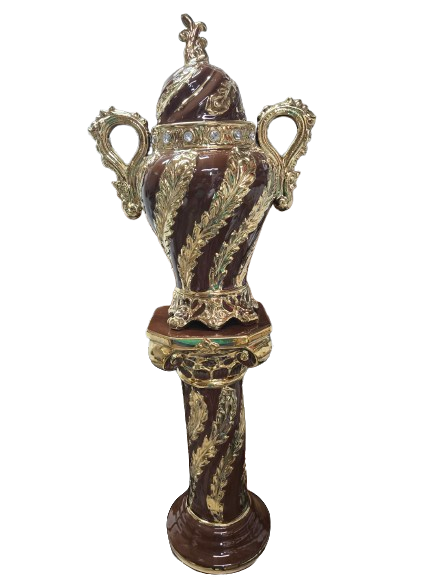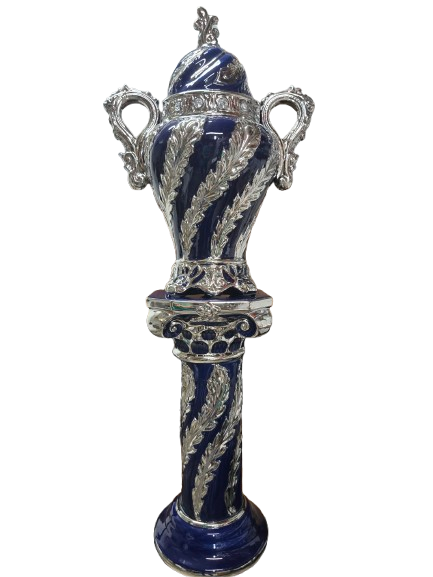Exploring the Use of Erukes in Yoruba Spiritual Practices
The Yoruba spirituality is rich and deeply rooted in history, culture, and tradition. At the heart of these spiritual practices are various symbols and tools that hold significant meaning. One such tool is the Eruke, a term that intrigues many. In this blog post, we’ll explore what Erukes are, how they play a role in Yoruba religious practices, and the cultural significance they hold within this vibrant community.
What Are Erukes?
Erukes are unique tools in Yoruba spirituality, serving as conduits for various religious ceremonies and practices. To understand their significance, it’s essential to delve into what they are and their primary characteristics. The Eruke is often understood as an object of both practical and symbolic value. Typically, a form of fly whisk, these sacred items are crafted with specific materials and designs that resonate with various deities and spiritual energies. This material composition is not merely aesthetic but embodies deep cultural resonances—each component reflects particular aspects of Yoruba cosmology according to The Sacred Arts of the Black Atlantic.
In the context of the Yoruba religion, Erukes are thought to encapsulate spiritual energy. They are seen as extensions of oneself, connecting the physical world to the unseen spiritual plane. Historically, the use of fly whisks can be traced back to practices that date to ancient times, revealing their longstanding importance within the Yoruba culture. With each movement and gesture, the Eruke projects sacred intentions and calls upon the protective guidance of deities, particularly Obatalá, often regarded as a figure of divine wisdom and purity in Yoruba belief. The Philosophy of the Yoruba further underscores how intertwined these objects are with the narratives and folk wisdom of the community.
As tools, Erukes’ construction varies significantly depending on their intended use and the spiritual figure they are associated with. For example, Erukes linked to Obatalá, a deity symbolizing purity, are often white, reflecting the color associated with cleanliness and peace. This careful attention to material and color highlights the intimate relationship between the Eruke and the spiritual domains they serve. Such specificity underlines the intricate ways in which the Yoruba weave symbolic meaning into their spiritual practices.
The Role of Erukes in Yoruba Ceremonies
In Yoruba ceremonies, Erukes serve not just as ritual objects but as vital links between worshipers and the spiritual realm. Their use is widespread across various rites, ranging from personal rituals to large community ceremonies. One of the most notable uses of Erukes is in the rites of passage, where they signify transformation and the guidance of divine presence. The presence of an Eruke in these ceremonies is a powerful symbol; it denotes a call to the divine entities, ensuring that the ritual is observed and blessed by the gods.
The ceremonial usage of Erukes embodies a blend of performance and spirituality. As the ritual progresses, the Eruke is often swung or brandished in rhythmic motions, each sweep echoing intentions and prayers. This movement is not merely performative but creates a dynamic space where the spiritual energies can flow unhindered. This practice illustrates the seamless integration of physical artifacts with the overarching spiritual beliefs in Yoruba culture, emphasizing how expansive Yoruba spirituality is.
Beyond individual or community rituals, Erukes play a compelling role in larger cultural festivals. These events bring together various worshipers, symbolizing unity and cultural continuity. In such settings, Erukes are often used to hail ancestors, channeling energies that bind the community to its roots and ensuring the preservation of its rich spiritual heritage. The Eruke thus serves as both a physical and spiritual emblem, drawing participants into a collective experience that celebrates Yoruba identity.
Symbolic Meaning and Cultural Significance
Beyond their practical use, Erukes carry symbolic meanings. They represent values like respect, unity, and connection to the divine, reflecting the intricacies of Yoruba beliefs and cultural identity. As expressions of Yoruba metaphysical principles, Erukes are imbued with meaning that transcends their physical form. The Yoruba view life as an interconnected tapestry where all elements, physical and spiritual, are in constant dialogue. The Eruke embodies this philosophy by acting as a tangible bridge across realms, fostering harmony within the cosmos.
In understanding their cultural significance, it’s helpful to look at the intricate artistry involved in crafting an Eruke. The design is often a culmination of community wisdom, incorporating historical symbols and patterns that have been passed down through generations. This craftsmanship speaks to a broader cultural identity where creativity is seen as a divine gift—one that connects the artisan, the user, and the divine. This perspective is a hallmark of Yoruba aesthetics, which are deeply rooted in symbolic representation and spiritual meaning.
An Eruke’s symbolic potency is particularly vivid during communal ceremonies, where it embodies unity and collective identity. This extends beyond the immediate Yoruba community. Within diaspora communities across the globe, the Eruke symbolizes resilience and cultural pride, anchoring individuals to their ancestral lineage and spiritual roots, despite geographical distances. This global cultural resonance demonstrates the Eruke’s power as a cultural touchstone, reaffirming its role in preserving Yoruba traditions across the world.
Preservation and Modern Interpretations
While traditional uses of Erukes continue to be significant, modern interpretations have also emerged. Exploring how these tools are preserved in contemporary practices provides insight into the dynamic nature of Yoruba spirituality. In today’s world, Erukes are celebrated in art and popular culture, manifesting the timeless wisdom of the Yoruba in novel ways. This preservation effort revitalizes interest in traditional Yoruba crafts and keeps the practice alive for new generations.
The contemporary visibility of Erukes is partly credited to their incorporation into multicultural platforms and spiritual explorations. Through various channels like film, literature, and digital media, Erukes are being reimagined to engage with global conversations about identity and spirituality. These adaptations ensure that the cultural messages of unity, respect, and devotion are not lost, even as they adapt to new environments. For instance, in places like Botanica Nena, Erukes and related tools are readily made accessible to those seeking a connection with Yoruba spiritual traditions.
This modern resurgence underscores a broader trend of reconnecting with ancestral practices in the face of rapid globalization. As individuals and communities seek to root themselves amid ever-changing societal landscapes, tools like the Eruke provide not only spiritual solace but also a tangible link to tradition. This continuing evolution of the Eruke’s relevance demonstrates the adaptability of Yoruba practices, illustrating how culture and spirituality can flourish together, despite the tides of change.
Embracing the Intricacy of Yoruba Traditions
The use of Erukes in Yoruba spiritual practices encapsulates the beauty and depth of Yoruba traditions. These tools, more than mere objects, are powerful symbols of connection, respect, and cultural identity. As we delve deeper into understanding such practices, we gain insights into the values and beliefs that have shaped the Yoruba community for generations.





































Dejar un comentario